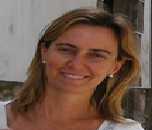
Ana Isabel Becerro
Instituto de Ciencia de Materiales de Sevilla (CSIC-US), Spain
Title: One-pot synthesis of hydrophilic Nd3+:Ba0.3Lu0.7F2.7 nano spheres: Crystal structure, X-ray computed tomography and NIR luminescence
Biography
Biography: Ana Isabel Becerro
Abstract
In the past few years, lanthanide (Ln)-doped rare earth (RE)-based nanoparticles (NPs) have emerged as an alternative to current imaging and sensing probes based on organic dyes or quantum dots due to the advantageous optical characteristics of Ln3+ ions. Among Ln, Nd3+ is particularly interesting because it is excited and emits within the first and second biological windows, in which the radiation is weakly attenuated by tissues. Thus, improving the sensitivity of the assays and lowering tissue damage. Among the Ln3+-doped RE-based NPs, fluoride-based matrices are preferred because they show a high luminescent efficiency due to their low phonon energies. Particularly, Ba1-xLnxF2+x nanoparticles have shown to be excellent up conversion bio probes as well as optimal contrast agents for X-ray computed tomography. The few reported methods for the synthesis of uniform Ba1-xLnxF2+x-based NPs required the use of high T (~300 ºC) and oleic acid as capping agent, which led to hydrophobic particles and needed therefore a second step to make them water dispersible. The purpose of this study is to find a synthetic route of Nd3+-doped Ba, Lu fluoride NPs using a one-step process in the absence of any capping agents to render hydrophilic uniform nanoparticles at much lower temperatures than the methods cited above. Findings: Uniform, 50 nm diameter, hydrophilic Nd3+-doped Ba0.3Lu0.7F2.7 NPs were synthesized using a simple precipitation method consisting in the aging of an ethylene glycol solution containing Lu acetate, Ba(NO3)3 and a fluoride-based ionic liquid. The composition and crystal structure of the un-doped NPs were analyzed with ICP and XRD, which revealed a BaF2 cubic crystal structure that is able to incorporate 70 mol% of Lu3+ ions. This finding contrasts with the reported phase diagram of the system, where the maximum solubility is around 30 mol%. Nd3+ ions up to, at least 2.5 mol%, entered the Ba0.3Lu0.7F2.7 cubic structure without altering the morphology of the un-doped NPs. The Nd-doped NPs exhibited NIR luminescence when excited at 810 nm and absorbed X-ray photons, thus demonstrating to be useful as contrast agents in both bio-imaging and X-ray computed tomography.

